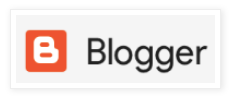In this blog we will look at the FortiOS v6.0
1st up static web-filter. This list is still easy to craft and to apply in a HTTP fwpolicy. Typically you will define URL filters ( static ) or use the categories an against a ANY dst-addr.
If you want to block HTTPS, you will need to enable a SSL inspection profile
Here snippet of the categories
note: take note of the movie-theater like ratings
The firewall.policy lookup is cool for searching fw.policies
NOTE: I seen it in the beta release, and very glad it made it into the final build
Policy matches are highlighted in this off artdeco-pinkish tone ;
The fortigate URL block message is still about the same.
My images did not load btw for firefox & safari. Vivaldi loaded just ( investigate the url.fortinet.net hyperlink in the standard block page )
Here's a Fw.policy modified for example.com HTTP/HTTPS
Firewall policy statistics are properly displayed
Custom ssh ins profiles are quick and simple to deploy.
So far My FortiOS v6.0 seems to be okay
NSE ( network security expert) and Route/Switching Engineer
kfelix -----a----t---- socpuppets ---dot---com
^ ^
=( @ @ )=
o
/ \







































